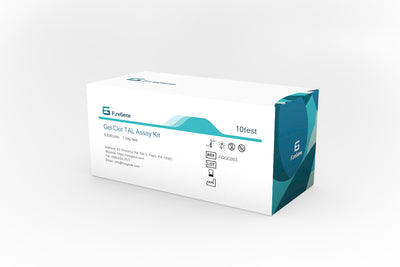
。
# Endotoxin Detection Using Gel Clot Assay Kit
## Introduction to Gel Clot Endotoxin Test Kit
The Gel Clot Endotoxin Test Kit is a widely used method for detecting and quantifying bacterial endotoxins in pharmaceutical products, medical devices, and other materials. This traditional yet reliable technique is based on the clotting reaction of horseshoe crab (Limulus amebocyte lysate, LAL) when exposed to endotoxins.
## How the Gel Clot Assay Works
The gel clot method operates on a simple principle: endotoxins trigger a cascade of enzymatic reactions in the LAL reagent, leading to the formation of a gel clot. The test involves:
– Mixing the sample with LAL reagent
– Incubating at a controlled temperature (typically 37°C ± 1°C)
– Observing for clot formation after a specified time
## Advantages of Gel Clot Endotoxin Testing
The Gel Clot Endotoxin Test Kit offers several benefits:
– Simple visual endpoint determination
– No requirement for expensive equipment
– High specificity for endotoxins
– Cost-effective compared to other methods
– Long shelf life of reagents when properly stored
## Applications in Pharmaceutical Industry
This test kit plays a crucial role in quality control for:
– Injectable pharmaceuticals
– Medical devices that contact blood or cerebrospinal fluid
– Water for injection (WFI) systems
– Biologics and vaccines
– Dialysis solutions
## Performing the Gel Clot Endotoxin Test
To conduct the test properly:
– Prepare all materials under endotoxin-free conditions
– Create appropriate dilutions of samples and standards
– Mix equal volumes of sample and LAL reagent
– Incubate for the specified time (usually 60 minutes)
– Invert the tube to check for gel formation
## Interpretation of Results
Results are interpreted as follows:
– Positive result: Firm gel that remains in the bottom when inverted
– Negative result: No gel formation or viscous solution that flows when inverted
– The endpoint is the last dilution showing a positive result
## Comparison with Other Endotoxin Detection Methods
While newer methods like chromogenic and turbidimetric assays exist, the gel clot method remains popular due to:
Keyword: Gel Clot Endotoxin Test Kit
– Lower initial investment
– Simplicity of operation
– Reliability for pass/fail determinations
– Compliance with pharmacopeial requirements
## Regulatory Considerations
The Gel Clot Endotoxin Test Kit meets requirements of:
– United States Pharmacopeia (USP)
– European Pharmacopoeia (EP) 2.6.14
– Japanese Pharmacopoeia (JP) 4.01
## Best Practices for Accurate Results
To ensure reliable endotoxin detection:
– Maintain proper aseptic techniques
– Use endotoxin-free consumables
– Validate the test method for each product type
– Include appropriate controls in each test run
– Follow manufacturer’s instructions precisely
## Conclusion
The Gel Clot Endotoxin Test Kit remains an essential tool for endotoxin detection in pharmaceutical and medical device manufacturing. Its simplicity, reliability, and regulatory acceptance make it a preferred choice for many quality control laboratories worldwide.